

The tier 7 German heavy tank Tiger I is an iconic World War II heavy tank that if you ask many people to name a heavy tank(whether they play World of Tanks or not) the Tiger I might come to mind. In-game the Tiger I unfortunately is slotted in at tier 7 where its armor for a heavy tank is below average across most of the tank since it is pitted against most tanks designed to counter it and also surpass it. The Tiger I’s armor still holds up decently against tier 5, tier 6, and poorly aimed shots since it does have strong areas.
This weak spot guide will show you the weakest armor on the Tiger I(green), armor that is slightly stronger but still able to be penetrated(yellow), and the strongest pieces of armor(red). Purple areas are either track sections with no hull armor behind them, spaced armor with no hull armor behind it, or view ports that run the risk of causing zero damage critical hits.
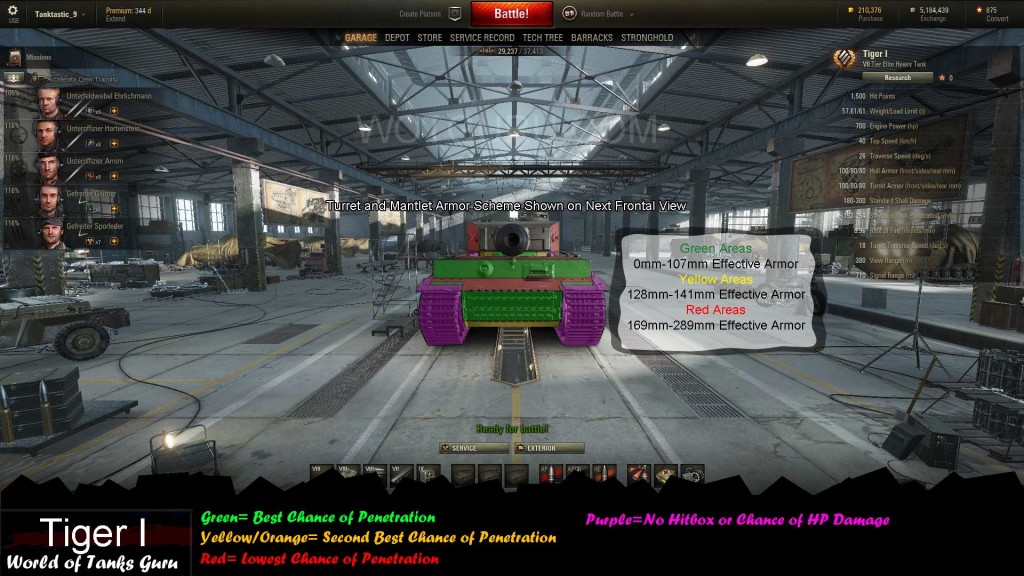
Frontally the Tiger I’s hull is very weak for a tier 7 heavy tank unless it angled horizontally. This is because its frontal hull armor is 100mm thick and the large green flat areas are not angled which make it extremely weak compared to its tier 7 peers. There is also a zero armor view port in the upper flat drivers area which further weakens the Tiger I’s frontal armor profile. The only true strong section of the frontal hull is on the angled glacis which will bounce anything outside of premium rounds or shots shot from above into it. The outer edges of the turret are also strong since they are angled at 70 degrees which will auto-bounce any non-HEAT rounds. For more turret and mantlet weak spots continue on to the next image for the Tiger I’s frontal armor.
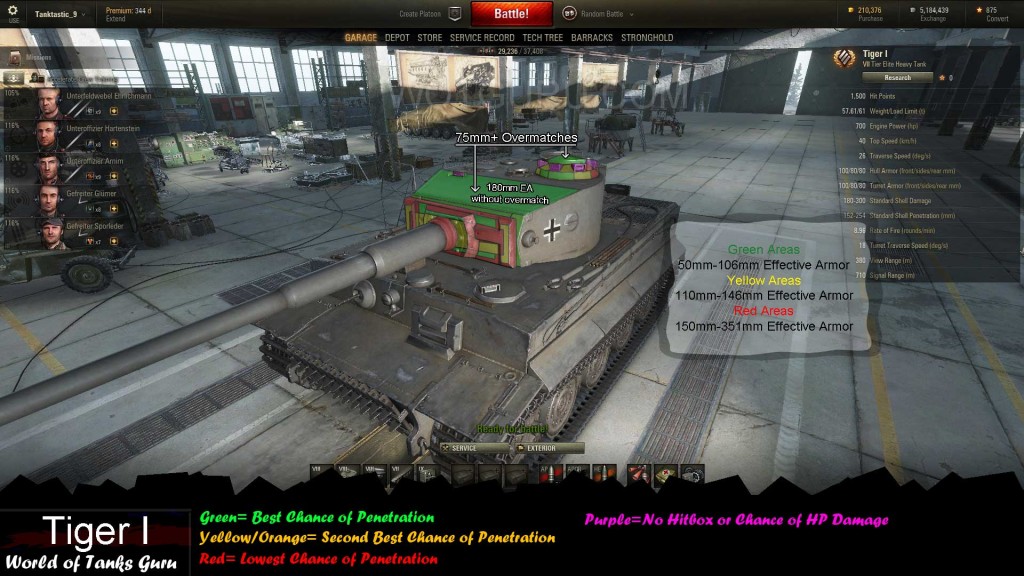
While the outer edges of the frontal turret are strong the front of the turret is almost covered completely with a mantlet which usually means there is a lot of armor to go along with it. However, with the Tiger I it means the armor is hit or miss and overall it is riddled with extremely weak areas. Most tier 5-7 tanks will be able to punch through the yellow areas on the mantlet and the green areas will provide no challenge. This is a huge advantage if you are against a Tiger I trying to hull down and the mantlet is easily able to be hit with well placed shots.
Moving up to the turret roof and cupola you find even more weak spots ripe for the picking. The angled roof armor is only 25mm thick which allows 75mm+ guns to overmatch it. For tanks without a 75mm gun the roof armor is angled at 82 degrees with 180mm effective armor which will still bounce HEAT rounds unfortunately, but if you manage to shoot down at this armor area you will have a very weak 25mm plate to go through. The commander’s cupola is also very weak and you should only worry about potentially hitting a purple view port which could result in a zero damage critical hit. The top section of the commander’s cupola is another 25mm zone that can be overmatched with a 75mm+ gun.

The side profile of the Tiger I is even weaker than the frontal profile since the armor becomes even thinner and still is not angled. The only place to avoid is the mantlet and a few small locations on the commander’s cupola that could be heavily angled depending on your position.

As you might have guessed the rear armor of the Tiger I is also poorly protected for a tier 7 heavy tank. The trend of the armor not being angled and also not being very thick continues and you won’t be faced with a huge challenge here. Simply avoid the heavily angled sections on the commander’s cupola and also simply missing the Tiger I and you have no issues at all penetrating the rear armor. Overall, the Tiger I’s armor is poor for a tier 7 heavy tank since many of the tanks it actually faced on the battlefield are at tier 5 and tier 6. Fortunately the Tiger I makes up for the poor armor in other areas such as firepower and HP since while its armor does have a few strong areas it lacks adequate protection over the majority of the tank.

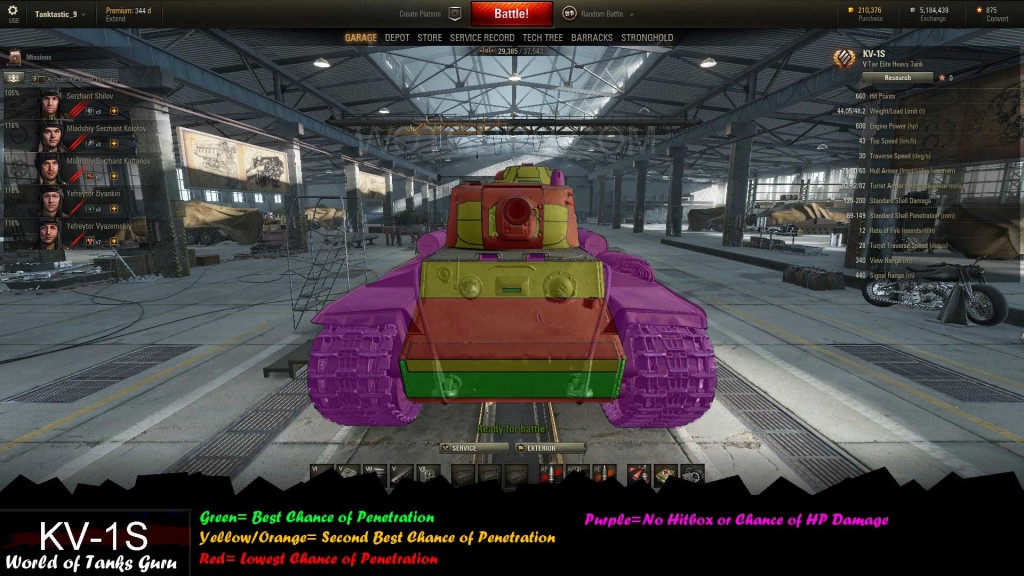
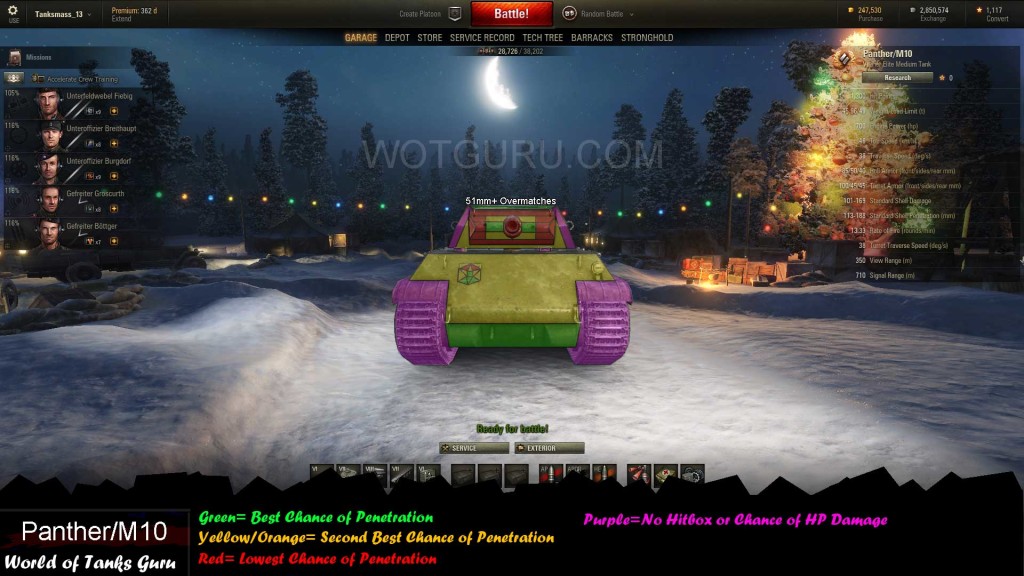
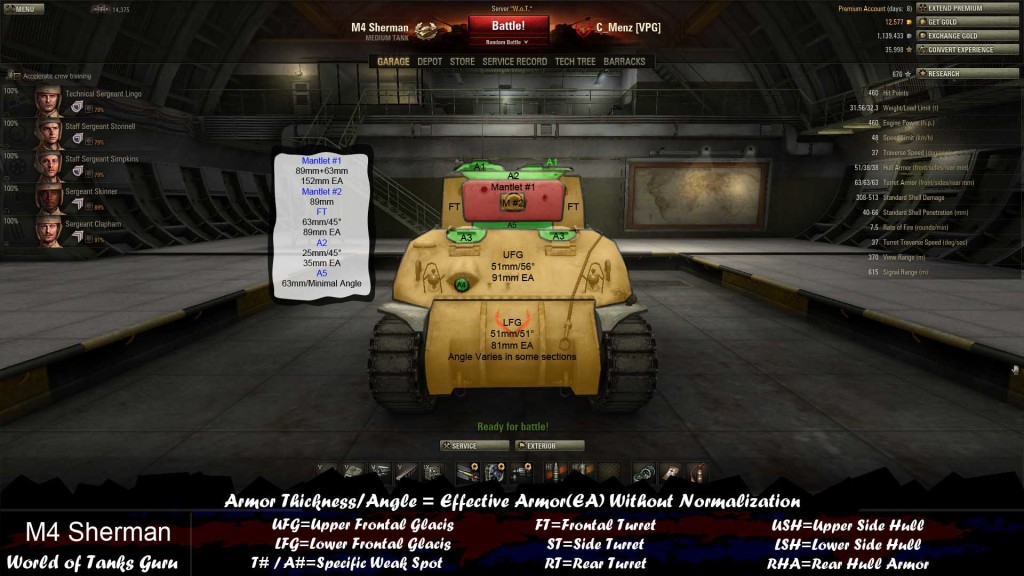
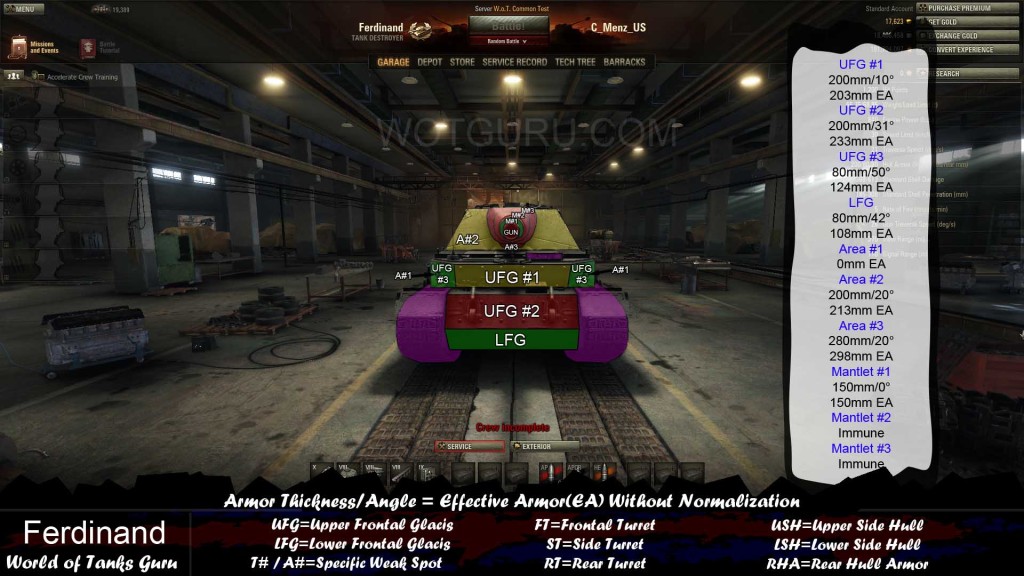 Weak Spot Guide: Ferdinand - World of Tanks Guru
Weak Spot Guide: Ferdinand - World of Tanks Guru World of Tanks Guide - Churchill I
World of Tanks Guide - Churchill I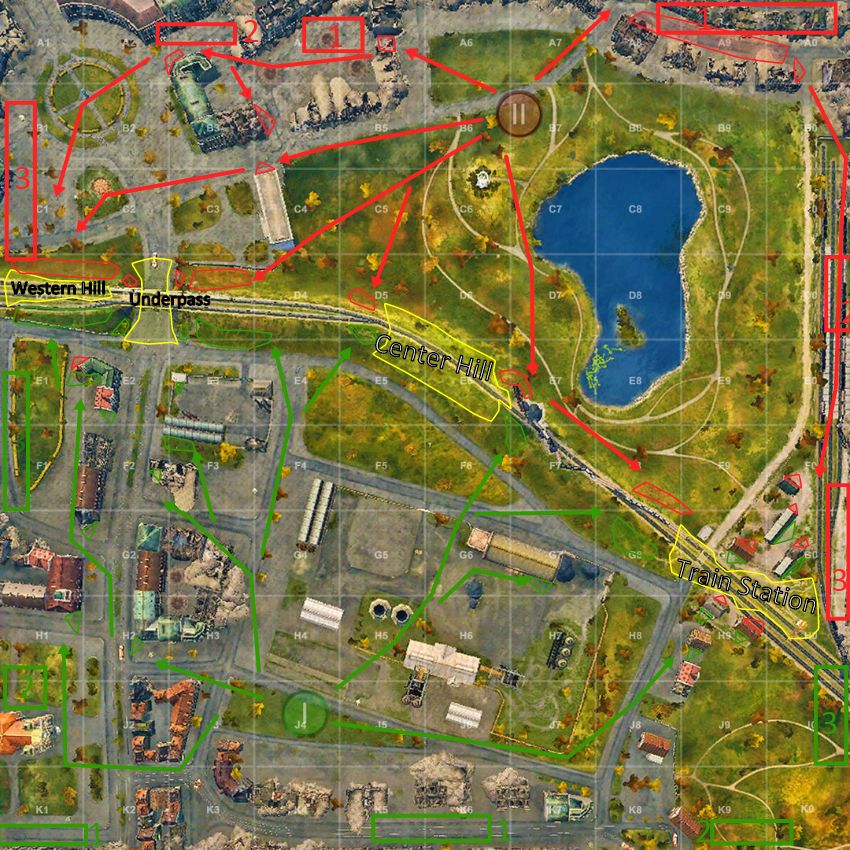 Map Strategy: Widepark - World of Tanks Guru
Map Strategy: Widepark - World of Tanks Guru Map Strategy: Ensk - World of Tanks Guru
Map Strategy: Ensk - World of Tanks Guru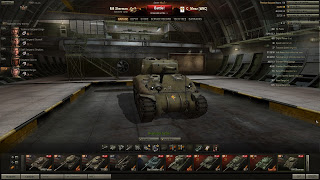 Tank Guide: M4 Sherman - World of Tanks Guru
Tank Guide: M4 Sherman - World of Tanks Guru